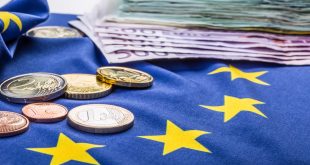The EUR/USD pair recently pulled back from a multi-week high near 1.1500, trading at 1.143 with a modest 0.13% gain. This correction follows remarks from European Central Bank (ECB) President Christine Lagarde, signaling the ECB may pause its year-long rate-cutting cycle. Meanwhile, optimism about improving US-China relations has bolstered the US dollar, adding pressure on the pair.
ECB’s Policy Shift: A Pause on the Horizon
On June 5, 2025, the ECB lowered its deposit rate by 25 basis points to 2.0%, marking its eighth cut since June 2024, totaling a 2% reduction. With inflation now just below the ECB’s 2% target, Lagarde described the bank as “in a good position” with its current rate path. This suggests a likely pause in rate cuts at the July meeting, as markets anticipate minimal new data to justify further easing. Lagarde emphasized a “meeting-by-meeting” approach but hinted at steady policy ahead, noting the ECB’s response to past shocks like COVID, the Ukraine war, and the energy crisis may be nearing its end.
This shift reflects the ECB’s confidence in its progress against inflation. The aggressive easing cycle, the most significant since the 2008-2009 financial crisis, has supported a struggling eurozone economy amid erratic US economic and trade policies. However, with inflation tamed, further cuts may be limited, with markets pricing in just one more reduction by year-end, possibly in December.
Market Implications and USD Strength
The EUR/USD’s retreat underscores the interplay between ECB policy and external factors. The USD’s strength, driven by positive US-China trade developments, has curbed the pair’s upward momentum. This dynamic highlights the eurozone’s vulnerability to global economic shifts. A pause in ECB rate cuts could stabilize the euro, but persistent USD strength may cap gains unless new data alters market expectations.
Outlook: What’s Next for the Eurozone?
The ECB’s cautious stance sets the stage for a period of policy stability, barring unexpected market turbulence. For investors, this signals a shift from aggressive easing to a wait-and-see approach, with the ECB likely to monitor global risks and domestic growth. The eurozone economy, still recovering from past shocks, faces an uncertain future with potential US policy shifts looming.
A balanced ECB strategy could support growth while guarding against inflationary surprises, but the EUR/USD’s path will hinge on broader geopolitical and economic trends.
This pause offers a moment to assess the ECB’s next steps. If inflation remains stable and growth picks up, the bank may hold rates steady longer than anticipated. Conversely, renewed economic weakness could prompt further easing, though likely at a slower pace. For now, the ECB’s measured approach reflects a pragmatic response to a complex global landscape, with the EUR/USD serving as a barometer of these shifting dynamics.

 Noor Trends News, Technical Analysis, Educational Tools and Recommendations
Noor Trends News, Technical Analysis, Educational Tools and Recommendations




